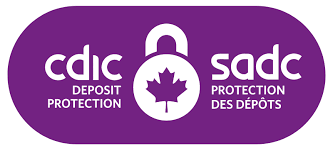Title: Wireless technology is paving the way for consumers to be charge
Source: SUN News & Promotions Press Releases
Dated: July 15, 2001
NEWS & PROMOTIONS
Press Release
Wireless technology is paving the way for consumers to be in charge
Sixty percent of the world’s leading financial institutions have a wireless strategy and consider mobile or wireless banking as a core element of their service delivery strategy.
With South Africa’s inherent strengths in the financial environment and its reputation of leading the world in strategic economic areas, these technologies will likely be embraced in this country, believes Stefano Mattiello, managing director of Sun Microsystems SA.
“Operators are busy upgrading their networks for next-generation wireless services: bandwidth and speed will steadily increase for next-generation wireless services. Many telcos have shelled out billions in the recent third-generation wireless license auctions, and they are now eager to launch services that will refill their coffers.
“Unfortunately, however, mobile commerce remains something of a gamble. Nobody can say for sure which services the market will be willing to pay for. They’re all looking for a killer application,” says Mattiello.
Research has shown that mobile banking and brokerage services are relatively high on most users’ wish lists.
A Data-monitor report published last year suggests that by 2004, there will be more than 16 million WAP-enabled customers in Europe and large numbers will be trading shares via their phones.
Mobile banking services may also answer customer concerns about losing access to traditional channels due to branch closures. The challenge for banks is to persuade customers that mobile banking is a safe and reliable alternative to a branch.
The report predicts that more than 2.2 million Scandinavians will have a “bank in their pocket” by 2004. Germany, Italy, France, and the UK will follow them.
“Mobile banking is going to transform the way people access their finances during the next two years,” says Data-monitor author HamishDunn. “Our predictions haven’t changed. In terms of the number of customers for mobile financial services, we are only predicting 214 000 by the end of this year. I still think 16 million users by 2004 is not too unbelievable.”
Mobile services are going to take time to impact banks’ revenue – it’s more a way of showing they are in tune with technology and moving towards a multi-product, multi-channel model, says Dunn. “Launching mobile services may affect their share price, but it’s not going to impact their margins for the next couple of years.”
Longer term, the brokerage is likely to be a profitable area. If banks get people to trade online and find ways to get them to increase the number of transactions, that is the way to be profitable.
Having web-enabled its Java-based core banking system, Habib Bank is deploying new access channels, including web, WAP, and GSM short messaging. It allows its customers (who reside mainly in the United Arab Emirates) to access their accounts from any web-enabled PC and via WAP-based mobile phones.
Those with regular GSM phones can now subscribe to a customized SMS service that uses push technology to send out messages when certain events occur in their accounts.
Habib Bank executive Reza Habib says: “Today we can offload more and more services to the web, which means customers have better control of their accounts and easier access, and at the bank, we save much labor.”
The bank’s chief concern has been security. It currently has two different types of commercial firewalls from Cisco and Sun, and its firewall bridge is written in Java.
“Once we had deployed the security, the great upside is that the entire banking system is now web-enabled. I can sit in Los Angeles and work as if in Dubai. With the security in place, we have proper digital certificates to ensure that I am who I say I am when I log in. Bank employees can also roam around freely and keep up to date in their work.”
In the US, Wells Fargo uses the net to deepen relationships and implement new services for its corporate clients. The bank claims one of the most active US websites with 2.4 million online customers and another 100 000 joining each month.
“More of the bank’s transactions flow through the Internet than any other channel,” says chief executive Steve Ellis. “We’re one of the largest Internet banks on the consumer side while on the commercial and wholesale side, we see the net as another channel to augment our existing sales delivery and service models.
One of Wells Fargo’s net-based B2B projects includes Commercial Electronic Office (CEO): a Java-based financial services portal through which it is offering an array of net-based tools and services for corporate and wholesale customers.
New tools are scheduled to come online every 90 days. Services include e-procurement, which enables corporations, to run purchasing departments online.
“The Internet is no panacea for a poor business model,” says Ellis. “You’ve got to understand your business processes and how the net will impact what you do. The Internet is changing how we build deeper relationships and communicate with our customers.”
Credit Suisse is among the first banks in Europe to offer private clients the ability to trade stocks from a Palm Pilot. It is preparing to unveil a solution allowing clients to access their accounts and trade various stocks from a Palm Pilot.





